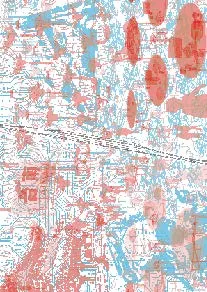OLD TOWN - [RAILWAY STATION] - SCIENCE PARK
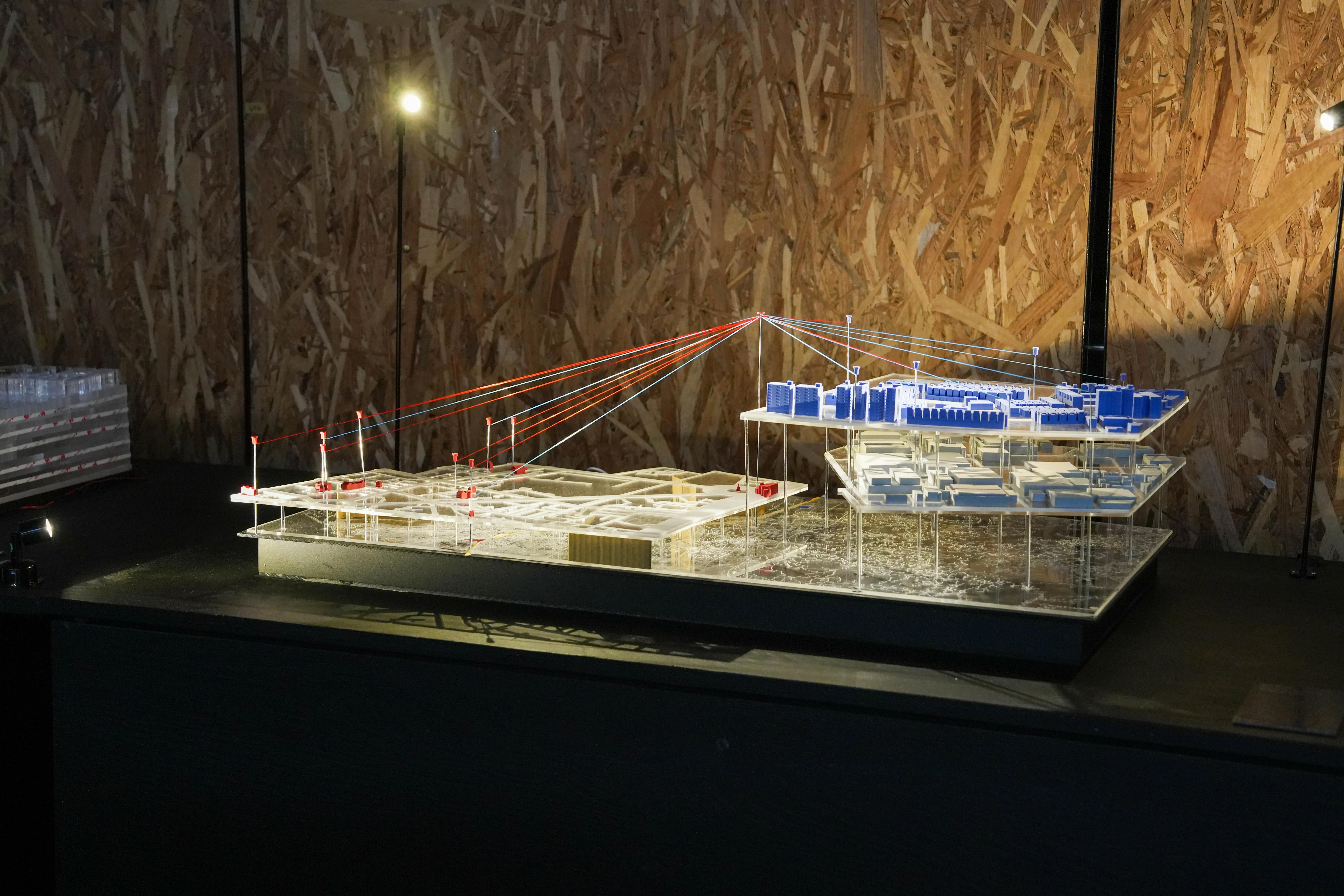
#Duality #Dominance #Mobility
Exhitbitor
Ho-Ling CHANG,
Li-Wen SUNG
Exhibition Team
AECOM|hLc Architect + Li-Wen Sung
Team Member
Wan-Chen WU,
Wan-Ting CHUNG,
Jo-Chia FANG
Exploring Daily Dominance and Dualities
Public Space on the West Side of Tainan Railway Station: A Centennial Hub in a 400-Year-Old City
Over 400 years of urban development, the function of Tainan Railway Station has transformed. The rise of the semiconductor industry in the past decade has fueled the economic success of the Southern Taiwan Science Park (STSP), increasing the city’s purchasing power and reshaping urban planning.This shift is reflected in the rapid and orderly development of newly planned districts.As a century-old node on Taiwan’s north-south railway line, Tainan Railway Station’s front areas have gradually blurred and redefined due to changing public attention and redistributed infrastructure.
The emergence of the STSP has also shifted Tainan’s image from a city of tradition, faith,street food, and slow living to one driven by technological and economic innovation. This proposal explores the dualities in Tainan’s public spaces, particularly in governance and efficiency,by uncovering, reinterpreting, and rewriting the narratives surrounding the station. It emphasizes a perspective unique to Tainan and Taiwan—one that transcends binary frameworks to reflect the city’s evolving identity and intrinsic values.
Physical Model
Through the contrast of road networks and building volumes, our model our model highlights the spatial distinctions between the Old Town and the STSP. The road scales and block patterns reflect different periods of urban development logic.
Red represents the Old Town, while blue represents the residential areas of STSP, with gray beneath representing the industrial area. This layering shows the causal relationship between residential and industrial areas—housing developments primarily serve factory workers’ needs. We chose representative architectural types as gathering nodes:traditional temples in the Old Town, and residential buildings and factories in STSP. The model reveals their spatial contrast—a mixed-use historical district versus a single-purpose modern zone.
At the top layer, intersecting red and blue lines connect the nodes, showing how residents’ movement patterns and lifestyles influence each other. Tainan Station serves as the crucial hub where all lines converge at the highest point.
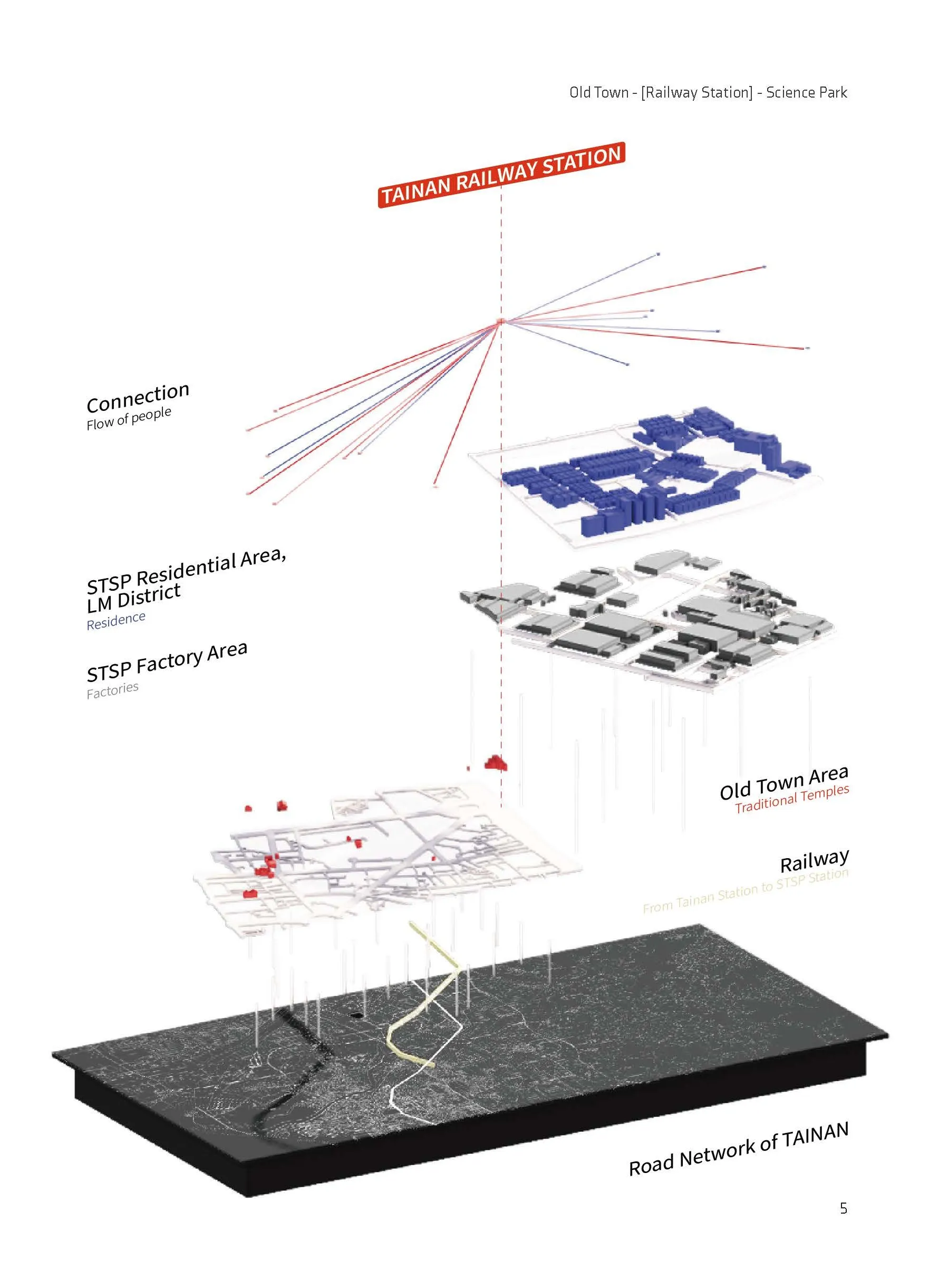
The Development of Tainan’s Old Town and the Science Park Over the Past 20 Years
Over the past two decades, Tainan’s Old Town and the Science Park have developed along distinctly different paths due to contrasting policies and land use intensities. This divergence has created two spatial identities with a temporal lag. The Science Park, rapidly expanding with high-tech factories,symbolizes capital, efficiency, and technology,asserting its presence over Tainan’s historic core.
Observations from Aerial Imagery:
2000: Tainan’s Old Town had already established a dense and well-developed urban fabric, remaining largely unchanged to this day. In contrast, the designated site for the Science Park was still in the early stages of governmental planning,characterized by vast expanses of agricultural land.
2008: Large-scale industrial zoning began to take shape within the Science Park, while residential developments were simultaneously planned to accommodate the workforce. These new housing clusters emerged on both the eastern and western sides of the railway corridor.
2014: The construction of numerous factory buildings was initiated, paralleled by the rapid development of homogeneous row houses in the adjacent residential areas.
2024: After more than a decade of transformation,the Science Park has become fully operational, and residential demand has surpassed supply. The once sparsely populated suburban outskirts of Tainan have now evolved into a new urban landscape,where high-tech industries serve as the primary driving force behind its growth.
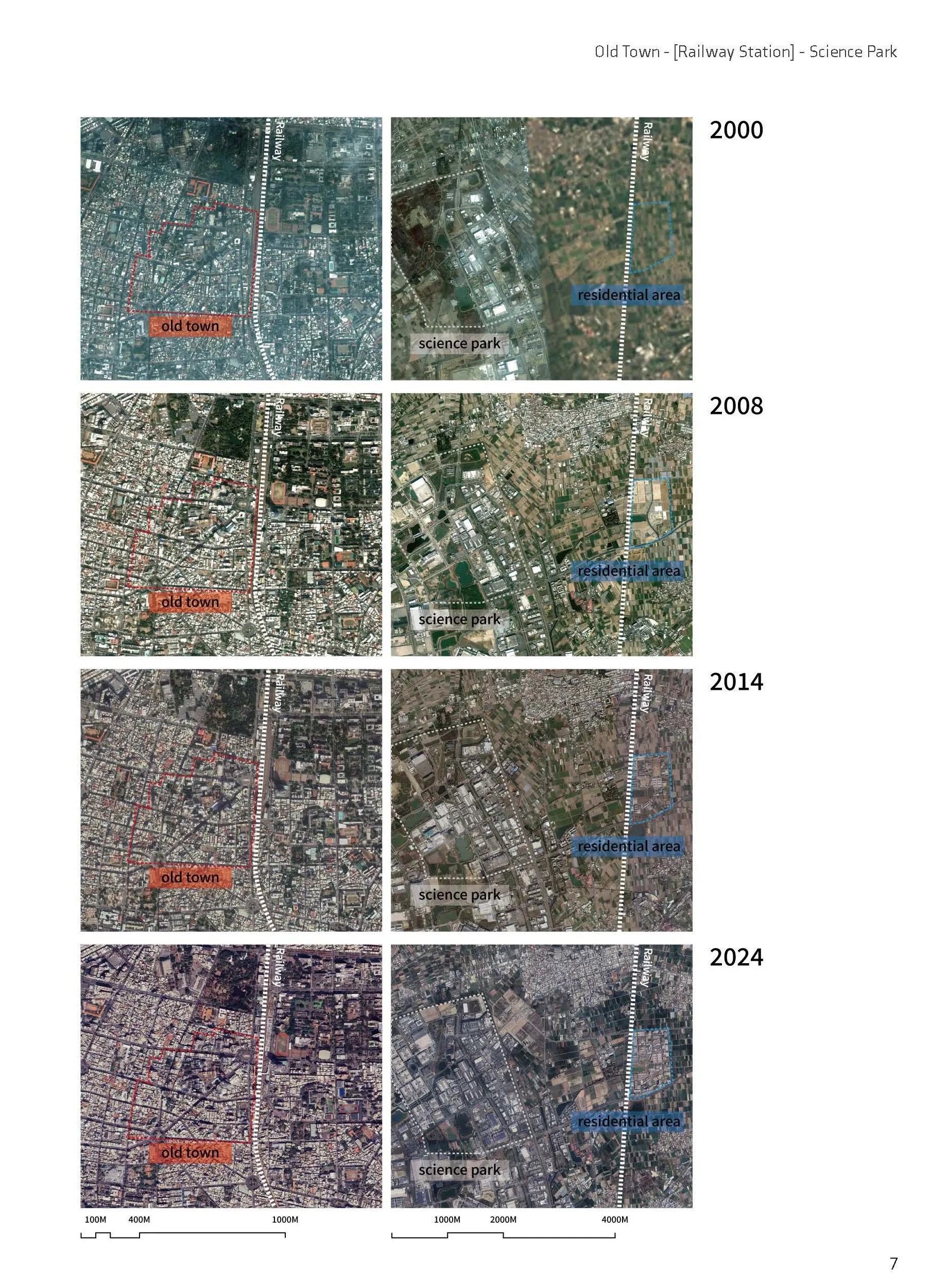
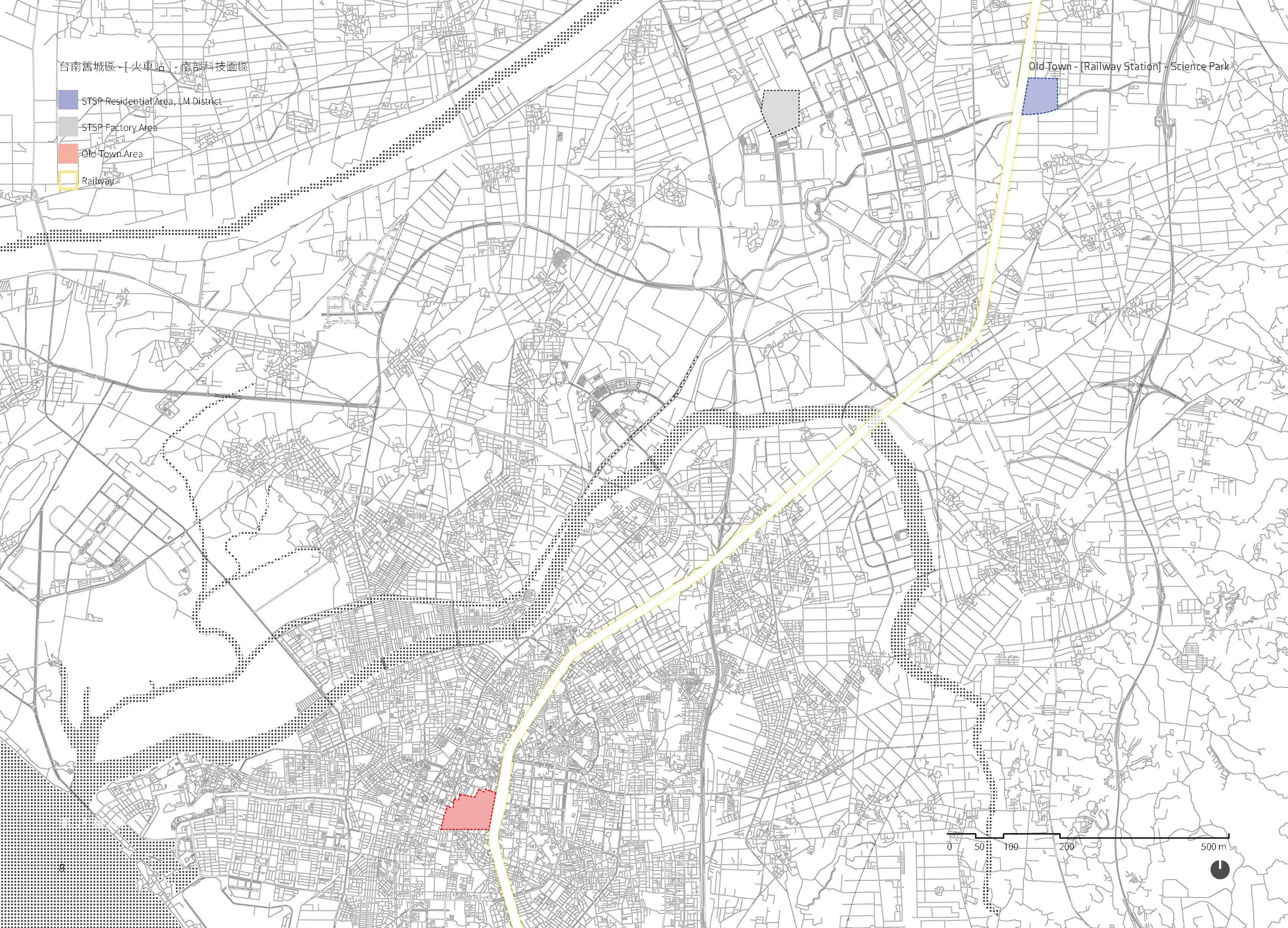
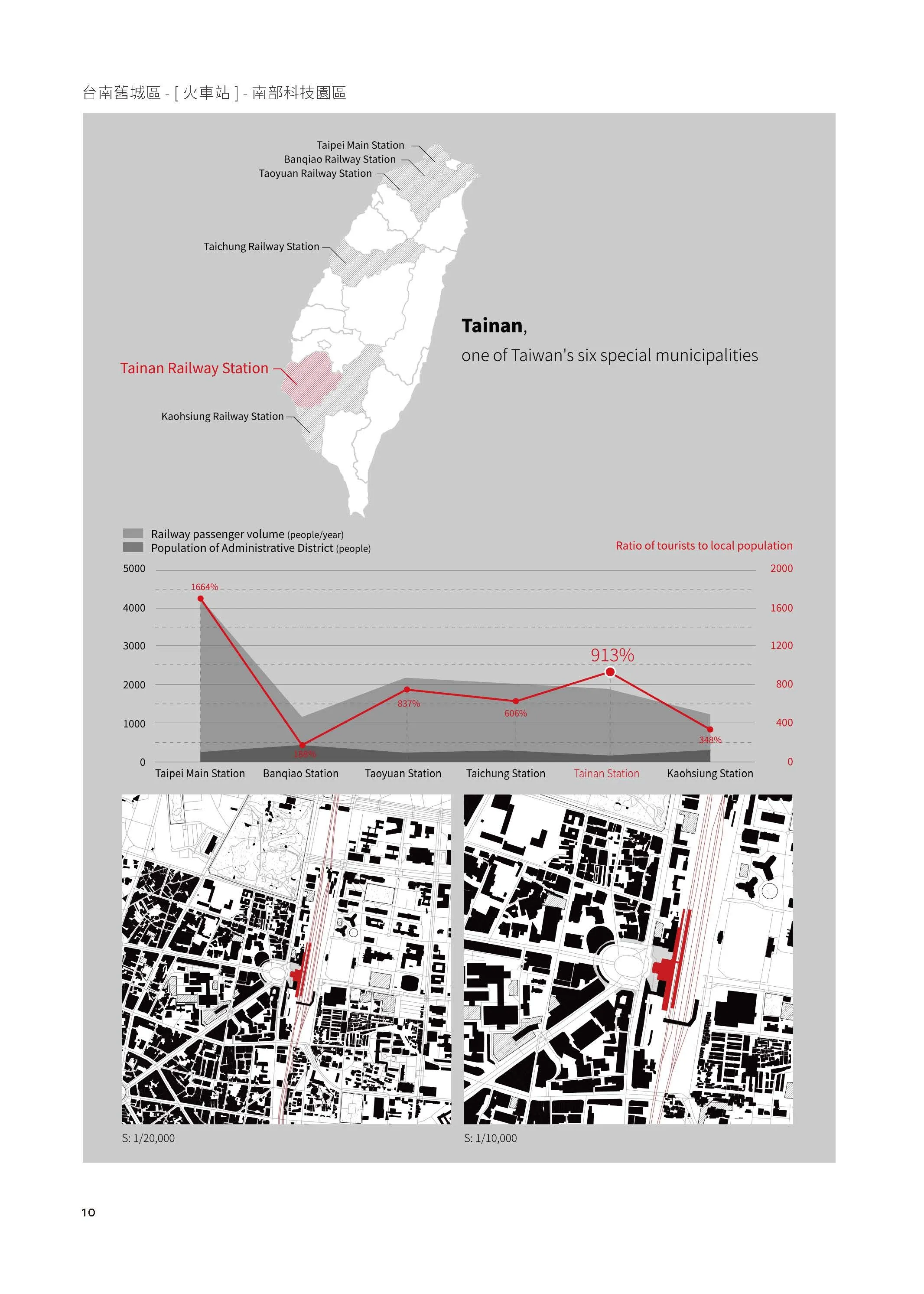
Tainan Station | A Collage of Impressions
What Defines Tainan?
Tainan, though not the capital of Taiwan, boasts exceptional connectivity, ranking second in passenger volume among Taiwan’s train stations. At Tainan Train Station, only one in ten travelers is a local resident,highlighting its role as a vital transportation hub managing vast traveler flows daily.
The Cradle of Taiwanese Culture
As Taiwan’s former capital, Tainan reflects a rich history shaped by Dutch colonization, Qing governance, and Japanese urban planning. It embodies a unique blend of old and new, where historic districts meet urban expansion, and where it serves as southern Taiwan’s cultural and metropolitan center.
Recently, the establishment of Taiwan’s largest science park has transformed Tainan’s image.This development has spurred population growth and economic revitalization, bridging its historic heritage with a progressive, innovative future.Tainan is learning to balance its history as Taiwan’s origin with its growth in modern technology.
Comparative Analysis: Tainan Railway Station and International Parallels
This section highlights six characteristics of Tainan Railway Station, comparing them to similar traits in global stations.
Academic Towns (Purple) Tainan and Cambridge, UK, are academic towns. Their stations are 100m and 900m from universities, reflecting scale differences.
Transit vs. Terminal (Green) Tainan is a transit station, while Venice is a terminal, showing different transport roles.
Space Allocation (Yellow) Tainan’s station plaza prioritizes vehicles, Tokyo’s prioritizes pedestrians.
Old vs. New City (Orange) Stations in Tainan and South Africa’s capital divide old and new urban areas.
Population Density (Blue) Tainan’s density matches New York City’s, showing regional importance.
Passenger Volume (Pink) Tainan matches Perth’s volume despite having one-fourth its population, highlighting heavy use.
Technology spreads its roots into the countryside,replacing rice paddies, blanketing fish ponds with solar panels, and erecting towering buildings and sprawling tech factories. Boasting Taiwan’s leading production value, it not only mirrors but exceeds the achievements of Hsinchu Science Park. With the high-speed rail directly connecting to the Southern Taiwan Science Park, new kindergartens popping up on every corner, a 200 NT glass of fresh draft beer becomes a convenience store staple. Welcome to the thriving new Tainan!
Under the theme “The Tainan Image | The Era and Dominance”, we attempt to highlight the disparities in lifestyles between Tainan’s traditional old town and the modern science park through organized data and comparisons. We chose to use a short comic to present a more personal and relatable perspective on how Tainan may appear to different people across different times. The story revolves around a tech-savvy professional in the science park, juxtaposing his lifestyle against his parents’lives in the old city, highlighting differences in both measurable facts and everyday experiences.”Which side truly defines the image of Tainan?”
The comic ends on an open note, suggesting that urban space are dynamic organisms—a blend of eras, technology, life, and people. Each generation’s perspective is valid in its context, free from judgment or interference.
Over time, we will find our place in this era and learn to take pride in the richness and charm of our city.
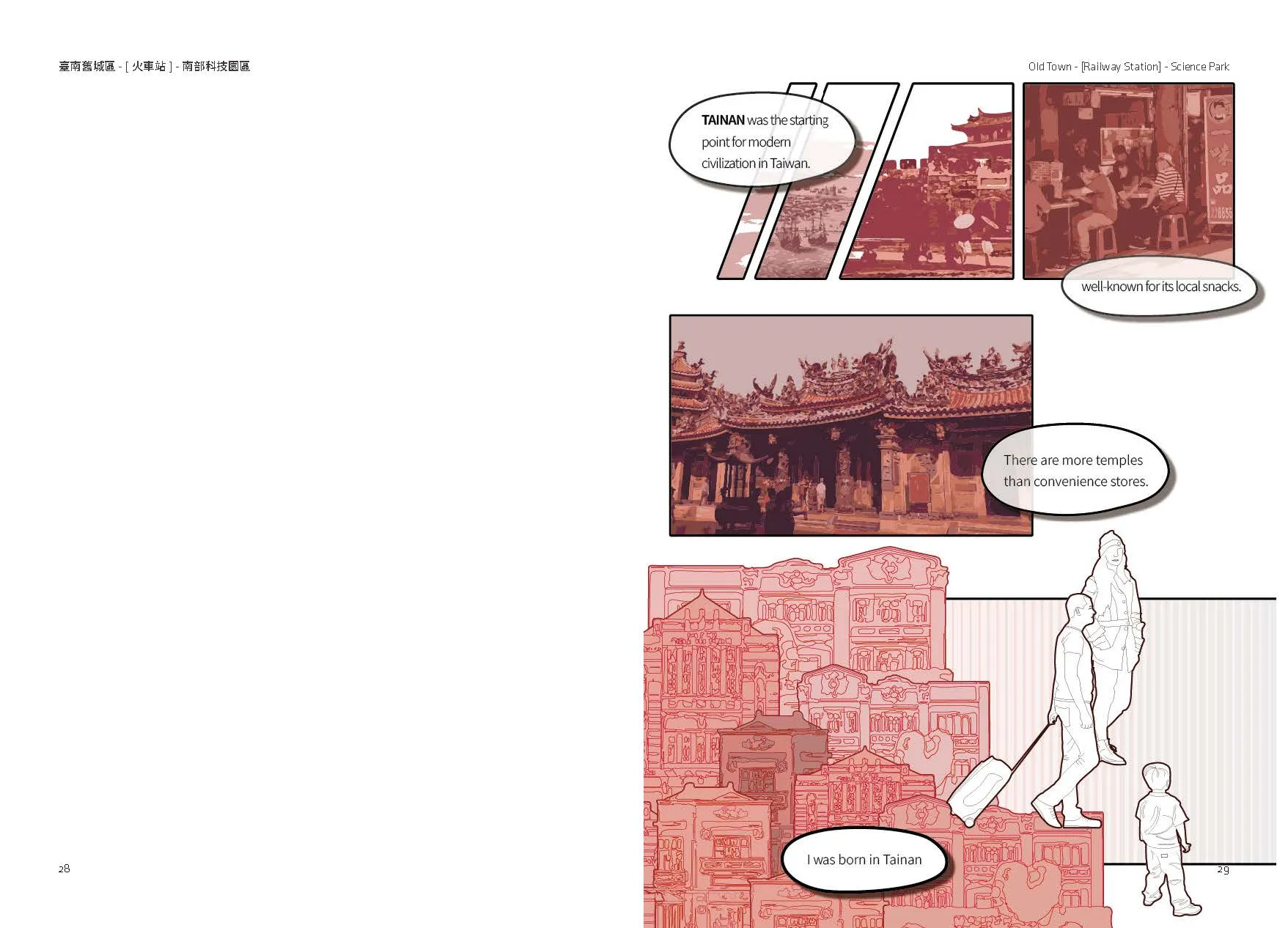
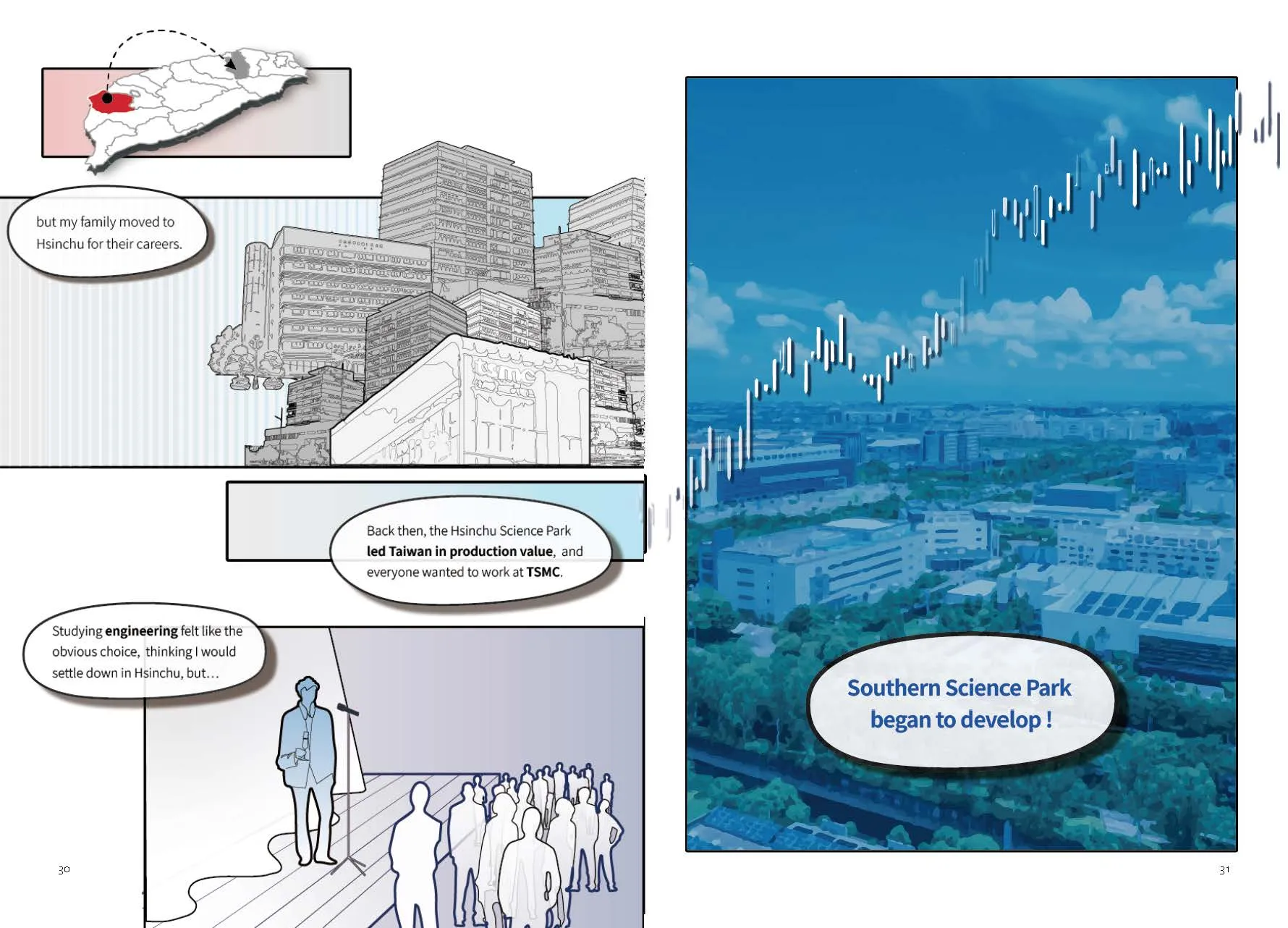
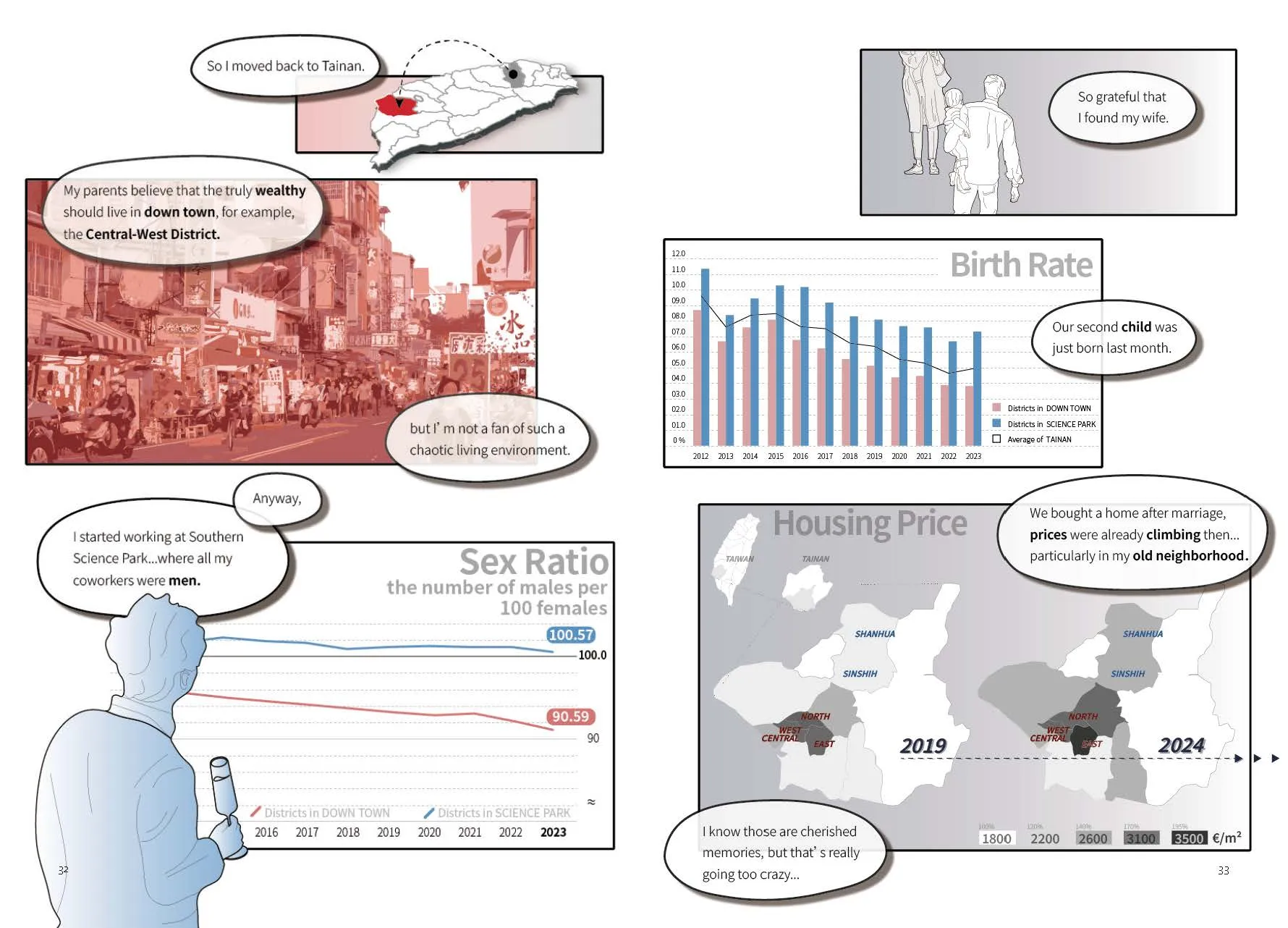
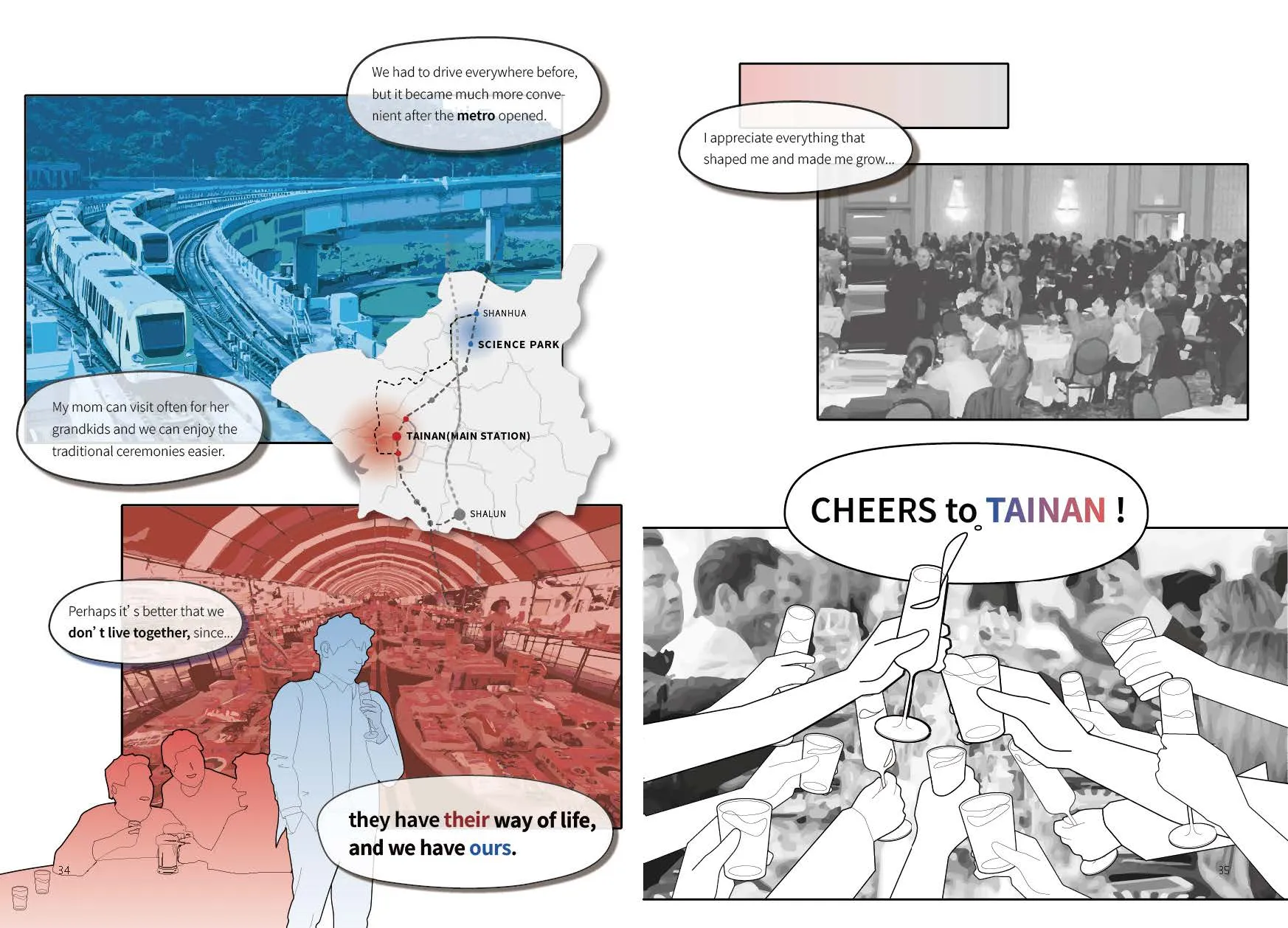
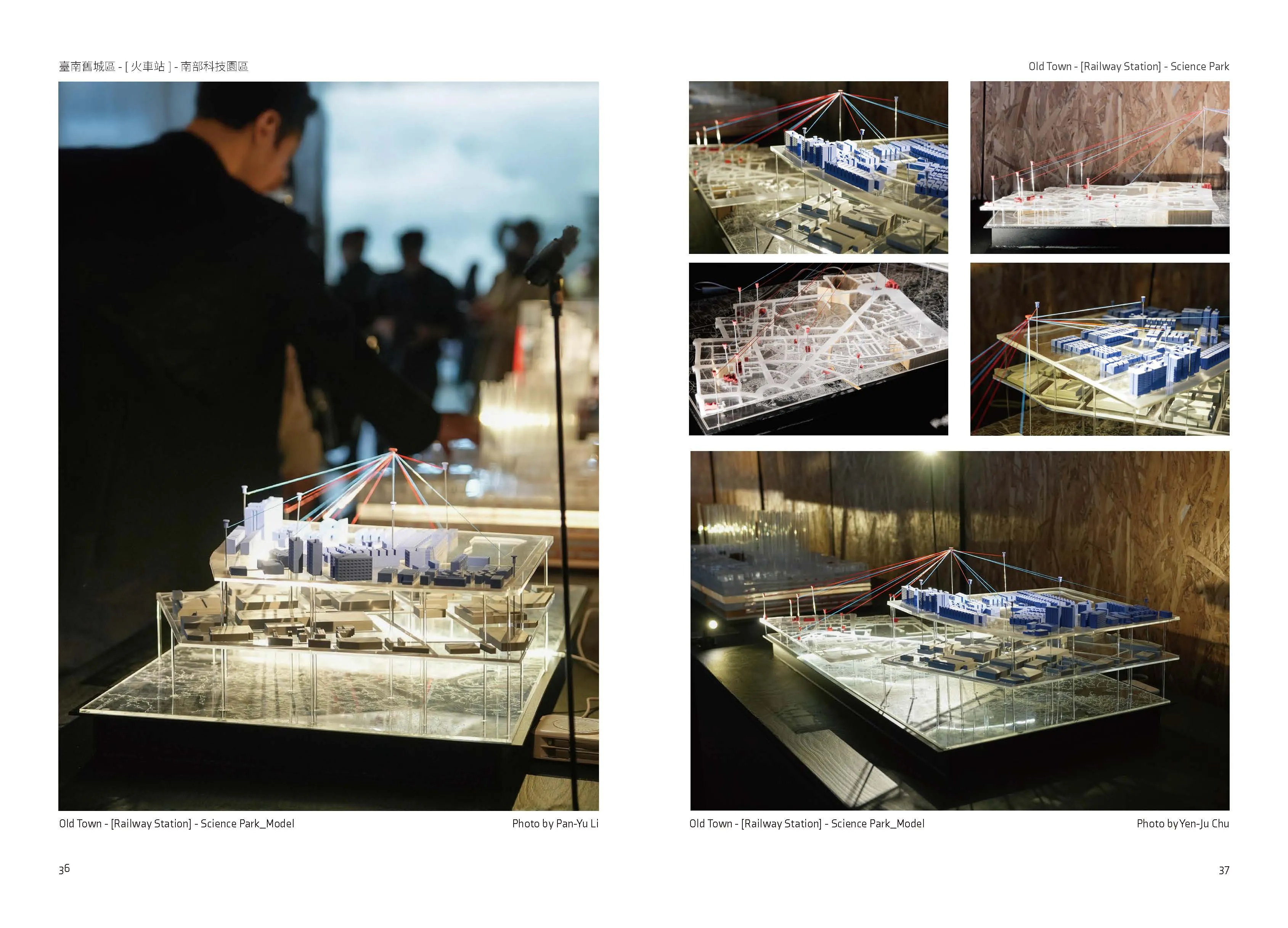
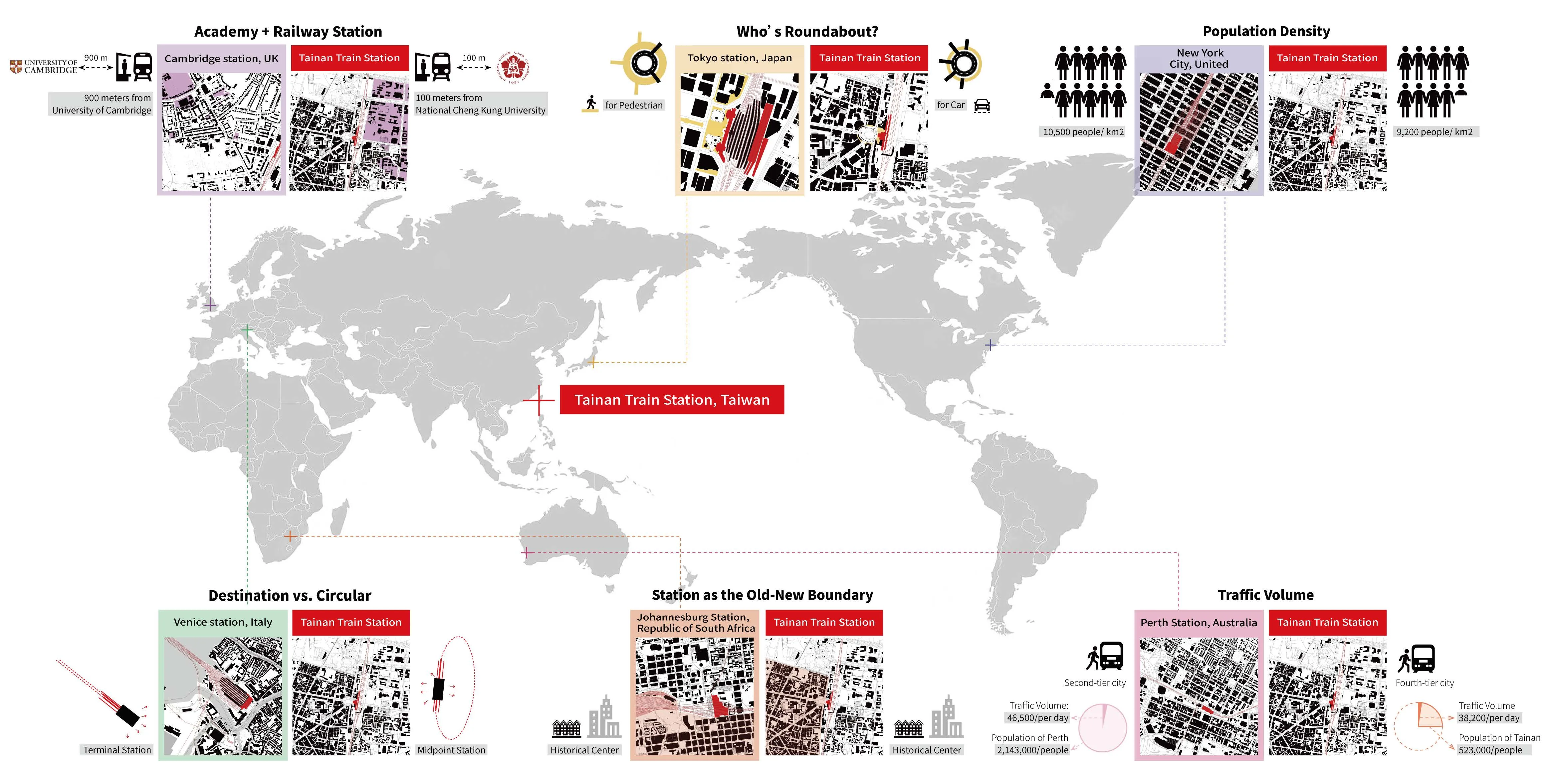
Tainan’s Future | Exploring Extreme Visions
When we attempt to gaze upon the city of Tainan,what emerges is a vivid and layered tableau—a city of contrasts, rich and complex. The main visual captures this essence through an intricate overlay of elements, reflecting the dynamic context of contemporary Tainan—a city at once chaotic and enchanting, disordered yet full of life.The composition is divided along a diagonal axis,unfolding two opposing forces: the warmth of the old city, rendered in red, and the efficiency of the new city, bathed in blue.
At its core, this design invites viewers to reimagine Tainan. In the exhibition space, we offer colored filters, allowing audiences to choose their perspective and interpret the image from different standpoints. Under the red filter, the scene comes alive with temples, banquet tables, and traditional beliefs—a vibrant celebration of the old city’s spirit. In contrast, the blue filter reveals a world dominated by high-tech factories, rapid productivity, and the capital-driven ethos of the Southern Taiwan Science Park. The same image transforms entirely, presenting starkly different visions of Tainan.
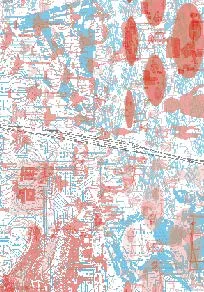
The story does not end here. A third perspective transcends these oppositions, retaining iconic elements—the red temples and the blue factories—while introducing a new path: the movement of people connecting the two. Here, we depict a possible future where differing values and contrasting environments coexist, finding harmony amidst tension and complexity.
Our perspective is open and multifaceted, while the image itself remains dynamic. Each viewer,through this interaction, can interpret the city from their unique standpoint, gaining insight into the structural complexity and multi-layered values embedded within Tainan. This process also encourages reflection on one’s own role and position within the living, evolving organism that is the city. Through this image, we aim to explore the possibilities of Tainan as a site of cultural plurality,opposing values, and rapid transformation. At the same time, we analyze how differing perspectives can intersect, engage in dialogue, and collectively generate new urban narratives.
